For many years, scientists were unable to properly age sharks because of their soft cartilage. However, in recent years scientists started using radioactivity from nuclear bombs to determine the ages of several species of sharks. What they found is that sharks live much longer than previously expected, with some species living for more than a century. Scientists now know that many shark species are among the oldest vertebrates on Earth.
10. Hammerhead Sharks
Average Lifespan: 25 – 30 years
Location: Worldwide in warmer waters along coastlines and continental shelves
Scientific Name: Sphyrnidae
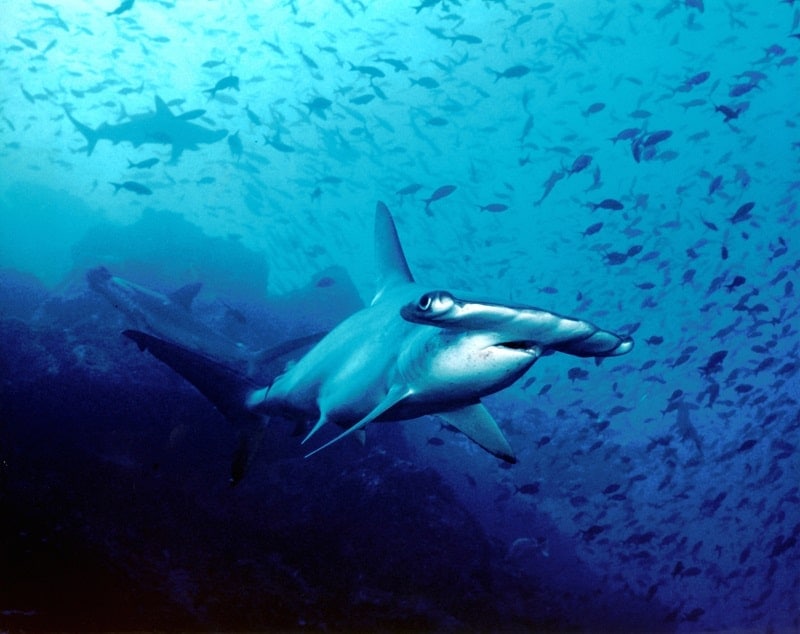
Hammerhead sharks are another type of shark that is easily recognized by its physical traits. They are known for their flattened and extended heads that are shaped like hammers. There are nine different species of hammerhead shark including the winghead shark, scalloped bonnethead, whitefin hammerhead, scoophead, great hammerhead, bonnethead, smalleye hammerhead, and smooth hammerhead.
Although it varies depending on the species, most hammerheads have a lifespan between 35 – 30 years. A unique characteristic of hammerhead sharks is that – unlike most sharks – they swim in schools during the day and only become solitary hunters at night. They are typically bottom hunters and eat fish, other sharks, squid, octopus, crustaceans, and stingrays.
9. Leopard Shark
Average Lifespan: 30 years
Location: Pacific coast of North America, from the U.S. state of Oregon to Mazatlán, Mexico.
Scientific Name: Triakis semifasciata
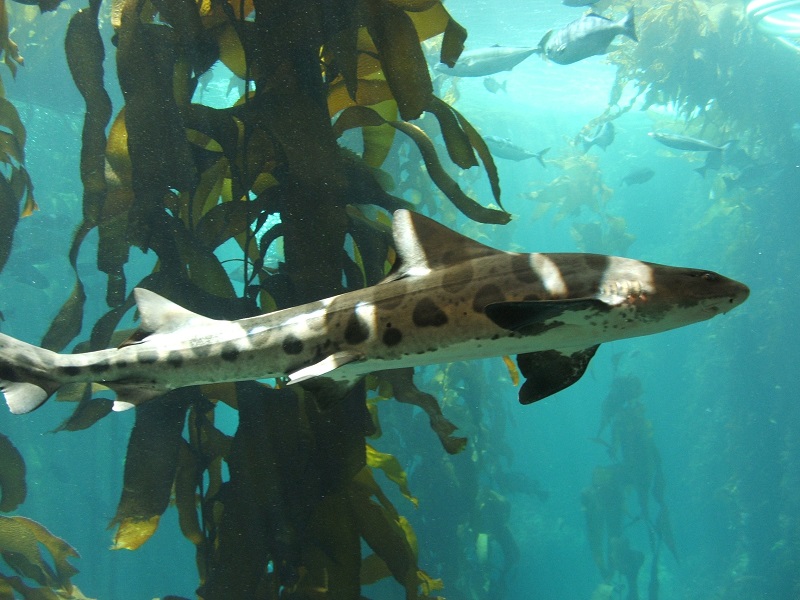
Leopard sharks are easily recognizable from the large dark spots on its back, which is where its name comes from. Large schools of leopard sharks are often seen in bays and estuaries foraging for food such as clams, spoon worms, crabs, shrimp, bony fish, and fish eggs. Leopard sharks often stay in a particular area and don’t migrate, which has caused genetic divergence between populations living in different regions.
As a smaller and harmless species, leopard sharks are often caught for food and the aquarium trade. They are a relatively slow-growing shark and can live up to 30 years in the wild. Despite being targeted by humans, leopard sharks (unlike most of the sharks on this list) have been marked with the lowest rating of concern by the International Union for Conservation of Nature.
8. Dusky Shark
Average Lifespan: 35 – 50 years
Location: Tropical and warm-temperate waters worldwide
Scientific Name: Carcharhinus obscurus
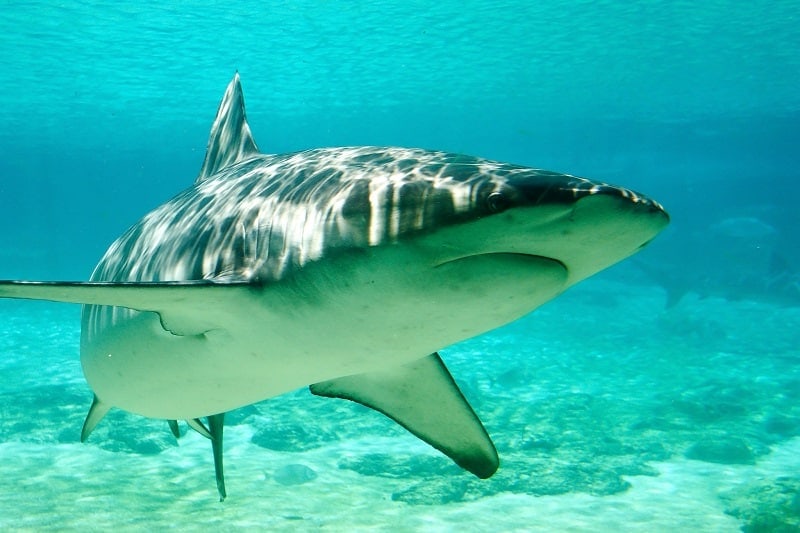
Despite its large size and perceived threat to humans, the dusky shark is one of the most vulnerable shark species in the world. They have a long life expectancy, living up to 50 years, and a very slow reproductive rate. These traits make the dusky shark susceptible to human-caused population depletion.
Although fishing for dusky sharks was banned in 2000 in the western Atlantic and Gulf, they still accidentally get caught on longlines and other fishing gear. Dusky sharks are one of the most sought after species for its fins, which are used for shark fin soup in Asia. According to National Geographic, as many as 750,000 dusky sharks could be caught for the shark fin trade each year.
7. Tiger Shark
Average Lifespan: 27 – 50 years
Location: Close to the coast mainly in tropical and subtropical waters
Scientific Name: Galeocerdo cuvier
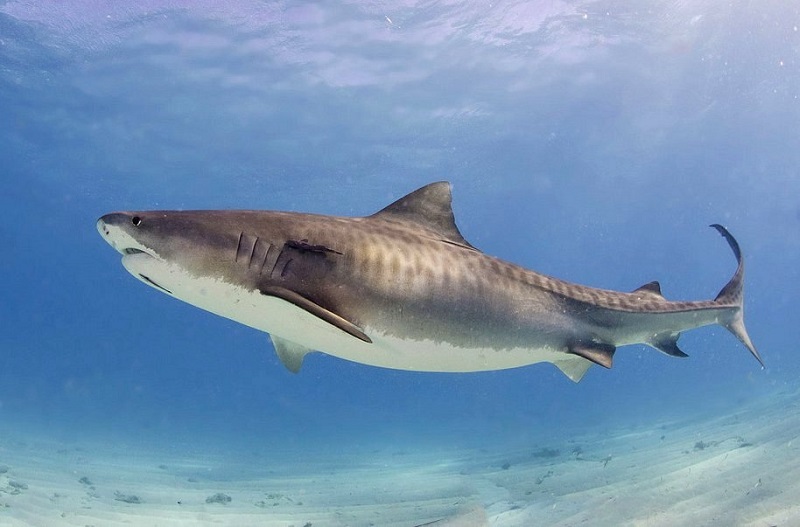
After the great white shark, the tiger shark is probably one of the most feared sharks in the world. Although tiger sharks are responsible for the second highest amount of human fatalities, like all sharks they do not intentionally hurt people. Tiger sharks are also known for their tiger-like pattern, which fades as they get older.
The life expectancy of tiger sharks is difficult to determine, but in the wild they can live up to 50 years. Also like the the great white shark, tiger sharks are one of the largest species of shark in the world. They are also notable for their wide range of prey that includes crustaceans, fish, seals, birds, squid, turtles, sea snakes, dolphins, and even other smaller sharks. Additionally, tiger sharks have a reputation for consuming a large amount of human garbage.
6. School Shark
Average Lifespan: more than 55 years
Location: Temperate waters worldwide, especially in the Northeast Atlantic, Mediterranean Sea, Southwest Atlantic, Northeast Pacific, Southeast Pacific, and off the coast of Australia
Scientific Name: Galeorhinus galeus
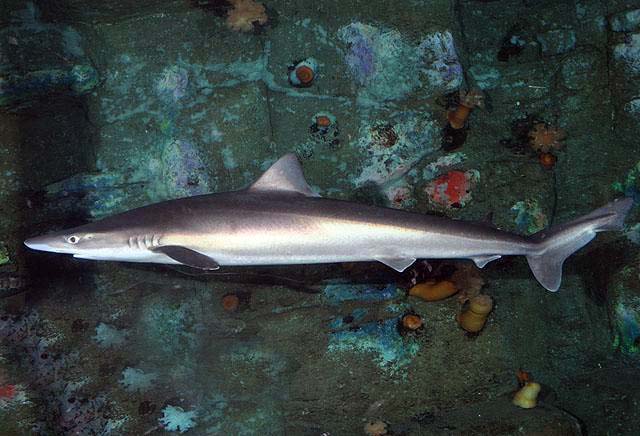
The school shark (commonly called the tope shark, snapper shark, and soupfin shark) when not threatened in the wild has a life expectancy of more than 55 years. School sharks are migratory and are found in temperate waters around the world. Some tagged specimens have shown up over a thousand miles from their initial location.
Unfortunately, school sharks are one of the most heavily exploited shark species in the world and they have been classified as vulnerable by the International Union for Conservation of Nature. School sharks are often used for its flesh, its fins, and its liver which has a high concentration of vitamin A. They are eaten around the world and their fins are dried and sold in Far East Asia.
5. Porbeagle
Average Lifespan: sources differ between 30 – 65 years
Location: Primarily cold and temperate waters of the North Atlantic and Southern Hemisphere
Scientific Name: Lamna nasus
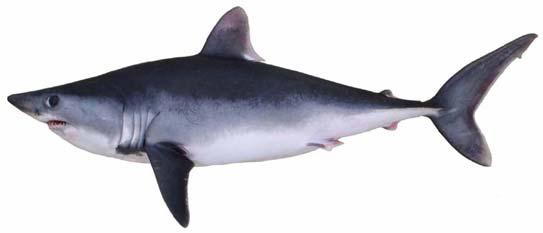
The porbeagle is a medium-sized species of mackerel shark, which is one of the most recognizable group of sharks that includes great white sharks, goblin sharks, and the megamouth shark. Like other mackerel sharks, porbeagles are some of the oldest sharks and have a life expectancy between 30 – 65 years.
Porbeagles are known for their playful behavior and may have been named after the porpoise and the beagle. They are often sought after by hobby fishers because they tug strongly on fishing lines. Commercial fishers on the other hand, see porbeagles as a nuisance because they steal hooked fish from their lines and damage fishing gear intended for smaller fish.
4. Great White Shark
Average Lifespan: 70 years
Location: Almost all coastal and offshore waters with greater concentrations in the United States, South Africa, Japan, Oceania, Chile, and the Mediterranean
Scientific Name: Carcharodon carcharias

The great white shark is probably the most famous shark in the world because of its (not necessarily deserved) reputation as a human killer, which was perpetuated by the novel and blockbuster film Jaws. While great white sharks don’t actually regularly feed on human flesh, another misconception that has persisted until recently is that they have relatively short lifespans. Until 2014, scientists believed that great whites only lived to around 25 – 30 years. However, new findings show that great white sharks may live up to 70 years, decades longer than the previous estimates.
Scientists now believe that great white sharks take much longer to mature and age similar to humans. Researchers say that this new information means great white sharks are more vulnerable to over-fishing because they take longer to reproduce and raise population numbers.
3. Spiny Dogfish
Average Lifespan: 25 – 100 years
Location: Mostly in shallow waters and further offshore in most parts of the world
Scientific Name: Squalus acanthias
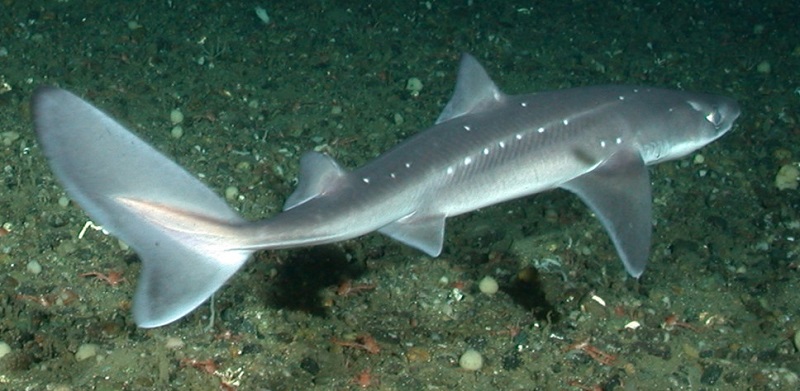
The spiny dogfish (also called spurdog, mud shark, or piked dogfish) is the best known species of dogfish sharks. They are small, slow-growing, and long-living sharks with an estimated lifespan of 25 – 100 years. Spiny dogfish have a gestation period of 18 – 24 months, which is believed to be the longest known gestation period of any animal in the world.
Spiny dogfish are bottom dwellers and are mostly found at depths of around 50–149 m (164–489 ft), but have been found deeper than 700 m (2,300 ft). Due to several factors – such as their late maturity, low reproductive capacity, small size, and longevity – spiny dogfish are one of the most vulnerable shark species prone to over-exploitation by fisheries.
2. Whale Sharks
Average Lifespan: 70 – 100 years
Location: All tropical and warm-temperate seas
Scientific Name: Rhincodon typus
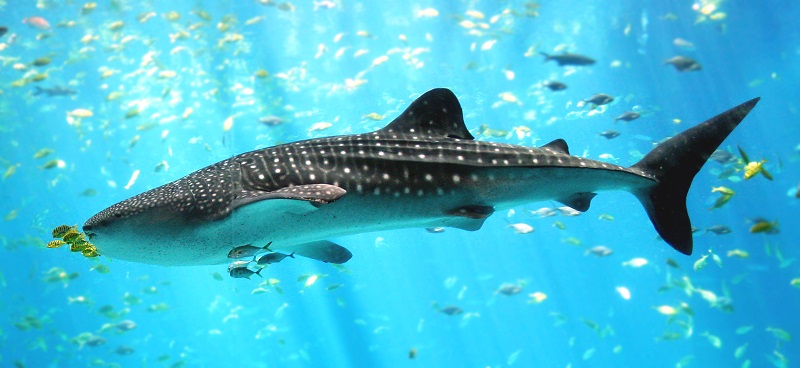
In addition to being one of the longest-living species of shark, whale sharks are known for being the largest existing fish species in the world. Despite their name and the way they look, whale sharks are not whales – they are a species of shark that has some characteristics in common with whales. The estimated lifespan for whale sharks is about 70 years, but researchers believe that they can live up to and over 100 years.
Whale sharks emerged about 60 million years ago and were first documented by people in 1828 after a specimen was harpooned in South Africa by a military doctor named Andrew Smith. Although whale sharks are massive, most people do not fear them like other types of sharks because they are filter feeders that almost exclusively eat plankton. They are known for their docile nature and many people like to swim with them in the wild.
1. Greenland Shark
Average Lifespan: 272 – 500 years
Location: North Atlantic Ocean and Arctic Ocean
Scientific Name: Somniosus microcephalus
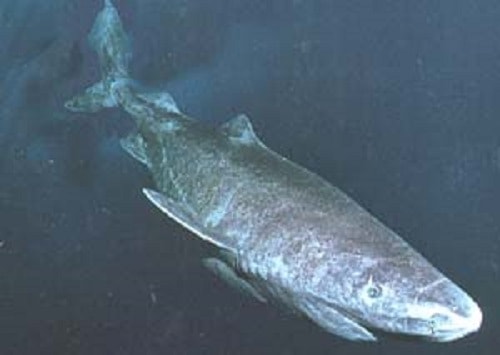
The Greenland shark is the oldest known shark in the world. The shark’s longevity was only recently discovered in 2016 when a group of scientists analyzed 28 female Greenland sharks. They determined that the Greenland sharks were at least 272 years old, but may potentially be over 500 years old. One of the scientists, Julius Nielsen of the University of Copenhagen said, “We definitely expected the sharks to be old, but we didn’t expect that it would be the longest-living vertebrate animal.”
Before the 2016 study, scientists thought it was impossible to age Greenland sharks because their skeletons, which are made of cartilage, lack the calcified growth rings of hard-boned vertebrates. The researchers decided to test the radiation – left by radioactive particles from nuclear bomb tests in the 1950s and 1960s – in the sharks’ eyes.











